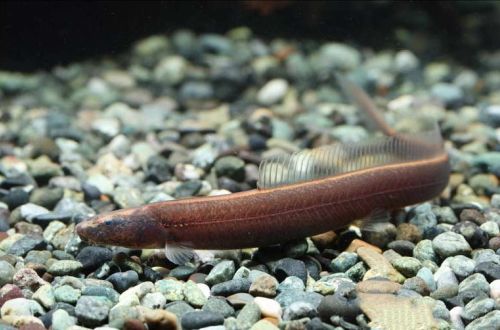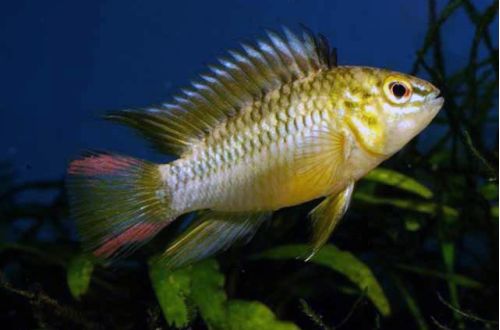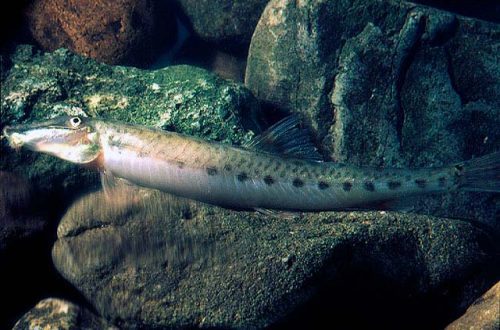
dragon char
Dragon char or Chocolate char, scientific name Vaillantella maassi, belongs to the Vaillantellidae family. The Russian-language transcription of the Latin name is also widely used – Vaillantella maassi.

Contents
Habitat
The fish is native to Southeast Asia. Wild populations are found in water bodies of Malaysia and Indonesia, in particular on the islands of Sumatra and Kalimantan. Inhabits small shallow streams flowing through tropical forests. Habitats are usually hidden from the sun by dense coastal vegetation and overhanging treetops.
Description
Adults reach a length of 10-12 cm. The fish has a long thin body and its shape is more like an eel. A distinctive feature of the species is an extended dorsal fin, stretching almost along the entire back. The remaining fins are not distinguished by large sizes. The color is predominantly dark brownish chocolate.
Behavior and Compatibility
Leads a reclusive lifestyle. During the daytime, the Dragon Loach prefers to be in hiding. He will protect his shelter and a small area around him from encroachments of relatives and other species. For this reason, it is not worth settling several Chocolate charrs, as well as other bottom-dwelling species, in a small aquarium.
Compatible with many non-aggressive fish of comparable size found in deep water or near the surface.
Brief information:
- The volume of the aquarium – from 80 liters.
- Temperature – 23-29°C
- Value pH — 3.5–7.5
- Water hardness – soft (1-10 dGH)
- Substrate type – sandy
- Lighting – subdued
- Brackish water – no
- Water movement – little or no
- The size of the fish is about 10-12 cm.
- Nutrition – a varied diet of a combination of live, frozen and dry food
- Temperament – conditionally peaceful
- Keeping alone in small aquariums
Maintenance and care, arrangement of the aquarium
The optimal size of the aquarium for one char and a company of several fish starts from 80-100 liters. The design must have shelters according to the number of Chocolate loaches, for example, caves or grottoes formed from snags and heaps of stones. The substrate is soft sandy, on which a layer of leaves can be placed. The latter will not only give naturalness to the design, but also saturate the water with tannins, characteristic of the natural biotope of this species.
The lighting is subdued. Accordingly, when choosing plants, preference should be given to shade-loving species such as anubias, cryptocorynes, aquatic mosses and ferns.
For long-term maintenance, gentle filtration should be provided. Fish do not respond well to strong currents. When choosing a filter, it is worth making sure that the char in search of cover cannot enter the outlets of the filter system.
Food
In nature, it feeds on small invertebrates, which it finds in the ground. In the home aquarium, it can be accustomed to dry food in the form of flakes and pellets, but only as a supplement to the main diet – live or frozen foods such as brine shrimp, bloodworms, daphnia, pieces of shrimp meat, etc.





